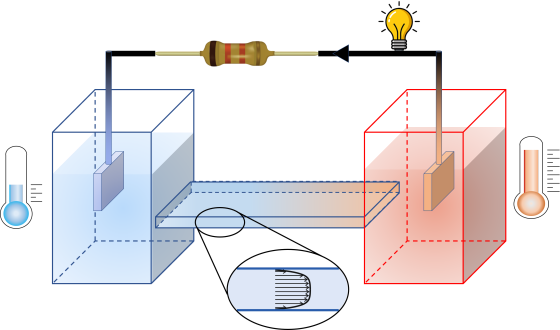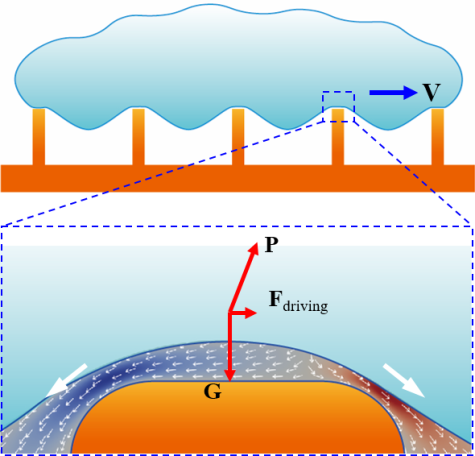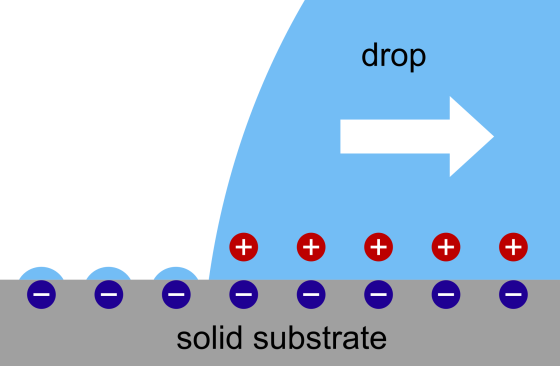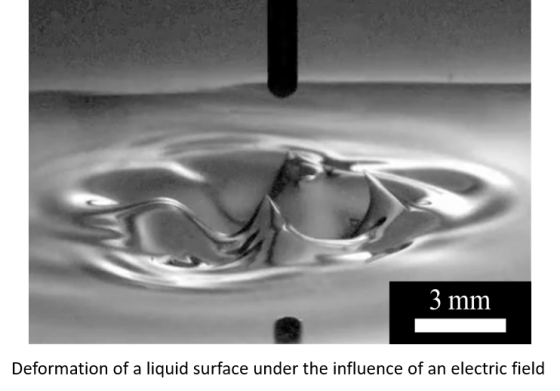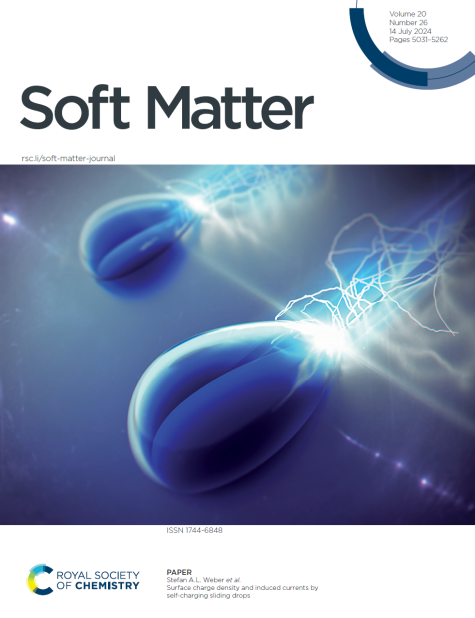Fachgebiet Nano- und Mikrofluidik
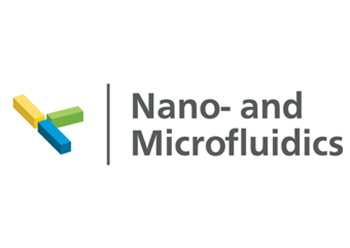
Herzlich willkommen am Fachgebiet Nano- und Mikrofluidik!
Wir beschäftigen uns mit Transportphänomenen in Fluiden auf der Nano- und Mikrometerskala. Dabei interessiert uns besonders die Erforschung von Grundlagen mit der Intention, den Weg für neuartige Anwendungen zu bereiten. Unser Ansatz beruht auf einer „Bottom-up“-Strategie, d. h. die Forschung ist erkenntnisgetrieben. Wissenschaftliches Neuland zu betreten fasziniert uns, aber dabei behalten wir Anwendungen im Blick. Diese können auf unterschiedlichen Gebieten wie beispielsweise Nachhaltigkeit, Energiewandlung, Verfahrenstechnik oder der (bio)chemischen Analytik liegen.
Unsere Forschung erstreckt sich über ein breites Themenspektrum und kombiniert experimentelle, theoretische und numerische Ansätze. Zu unseren Arbeitsgebieten gehören Gaskinetik auf der Nanoskala, Transportprozesse in Elektrolytlösungen und an Flüssigkeitsgrenzflächen, Benetzungsphänomene und Trennprozesse für Biomoleküle.
In der Lehre bieten wir Veranstaltungen auf Masterniveau an, in denen sich unser Forschungsansatz wiederspiegelt. Dies bedeutet, dass dem Verständnis von Phänomenen und Prozessen eine große Bedeutung zukommt, diese aber auch im Anwendungskontext betrachtet werden.
Falls wir Ihr Interesse geweckt haben, würden wir uns über eine Kontaktaufnahme freuen!


News
August 07, 2025
Breakup of wetting liquid bridges
Liquid bridges are liquid columns connected to solid or liquid domains on their two ends. They are, for example, responsible for the stability of sandcastles. Due to their omnipresence in nature and technological processes, they have been researched quite intensely. Much less is known about liquid bridges that are in contact with a solid surface over their entire length. Such structures can occur when a drop on a surface breaks up. The drop breakup is then connected to the breakup dynamics of the liquid bridge. We have characterized this process in a regime governed by viscous forces and found that dissipation at the moving three-phase contact line plays a key role. The results were recently published in the Journal of Fluid Mechanics.
June 11, 2025
Boosting thermoelectric energy harvesting
Almost everything that happens in this world relies on converting low-entropy energy into heat, which is lost to the environment. Tapping only a small fraction of this heat and converting it to electricity could pave the way towards new sources of energy. About 10 years ago, we showed that when a liquid electrolyte (such as water with added salt) is confined in a nanochannel to which a temperature gradient is applied, the generated voltage can be much higher than for a bulk electrolyte. We have recently extended this analysis to specific channels with walls along which the liquid is slipping instead of sticking to it, characteristic for special materials such as graphene. Our results indicate that in specific situations, the thermally induced flow field massively augments the thermoelectric response by the system. For example, the thermoelectric power can increase by a factor of more than 200. The results were published in the journal Physical Review Fluids.
April 28, 2025
Spontaneous symmetry breaking as a motor for Leidenfrost drops
Almost everyone is familiar with the Leidenfrost effect: a drop of water on a hotplate does not touch the surface, but is held at a distance by a thin film of steam, which gives the drop a high degree of mobility. However, the movement of the drop on the hotplate is undirected and erratic. About two decades ago, it was discovered that a Leidenfrost drop moves in a directional and controlled manner on a surface with the structure of a ratchet. The reason is that the asymmetry of the ratchet ensures that the vapor below the drop escapes in a preferred direction, which propels the drop. In a co-operation with Cunjing Lv and his group, a professor at Tsinghua University in China and a former postdoc of our group, we found a similar drop motion on completely symmetric surface structures, e.g., on metal surfaces with parallel grooves. Our theoretical model explains this effect: Once set in motion, the liquid surface near the hot metal surface is asymmetrically deformed and thus provides the permanent drive for the drop. In this case, it is not the solid surface but the liquid surface that forms the ratchet. The results were published in the journal Science Advances. In a more general context, this phenomenon is known as spontaneous symmetry breaking: An initially symmetric system dynamically evolves into a state in which the symmetry is broken. The principle is so general that the findings from the experiments with Leidenfrost drop could be used to develop new concepts for transporting liquids on the millimeter or micrometer scale.
April 4, 2025
Impacting drops do not splash when they are charged
Drops hitting surfaces at high velocity often splash and eject smaller droplets. This everyday phenomenon can cause challenges in technical applications like surface coating or printing. In a team with colleagues from China and Switzerland, we have shown that a small electric drop charge can keep them from splashing. Charges in the drop are electrostatically attracted to the surface and stabilize the drop. Our theoretical model accurately predicts this behavior. The work has been highlighted in the American Physical Society’s Physics Magazine and published in Physical Review Letters, marked as Editors’ Suggestion.

March 7, 2025
New group member: Merete Seyfried
Recently, Merete Seyfried joined our group as a PhD student. She will study thermoelectric energy conversion in electrolyte-filled nanochannels.
Welcome Merete!
February 3, 2025
Review article on liquid slide electrification
When a drop slides along a solid surface, it often leaves behind charge and accumulates the countercharge. This ubiquitous phenomenon challenges accepted theories of dynamic wetting. In cooperation with partners from the Max Planck Institute for Polymer Research and the University of Stuttgart, we have recently published a review article on liquid slide electrification in the journal Soft Matter. The article not only reviews the physical mechanisms underlying slide electrification and the consequences of this phenomenon, it also highlights open questions and suggests directions for future research in this field.
October 21, 2024
Electrophoresis of uncharged particles
Electrophoresis is one of the most important separation techniques in (bio)chemical analytics. It relies on the motion of charged molecules or particles that are suspended in a liquid under application of an electric field. We have shown that if the material of the suspended particle has a very high dielectric permittivity and if a charge-asymmetric electrolyte is considered (for example, a monovalent cation in combination with a multivalent anion), it will move in an applied electric field even if it bears no charge. Using the same ideas, we have shown that an electroosmotic flow through a channel with highly polarizable walls is generated even if there is no net charge at the channel walls. The corresponding flow velocities are high, which is why the effect could be utilized for pumping through nanochannels. The results were published in the Journal of Fluid Mechanics.
September 9, 2024
Lisa Bauer wins best paper award at ICTAM 2024
Recently, Lisa won the best paper award at the 26th International Congress of Theoretical and Applied Mechanics in the category fluid mechanics. The ICTAM conference series is probably the most important conference series in the field of classical mechanics worldwide, being held every four years. Without any doubt, winning the best paper award at such a conference is a great achievement.
Congratulations Lisa!
September 6, 2024
New lecture: Electrokinetics and Electrohydrodynamics
Beginning with the winter term 2024/2024, we offer a new M.Sc. course entitled “Electrokinetics and Electrohydrodynamics”. The aim of the lecture is to convey important basic knowledge in the context of the growing importance of electrical energy conversion systems in Mechanical Engineering. In many of these systems, liquids (especially electrolytes) are used which are affected by electric fields. The transport phenomena in such systems significantly determine their performance characteristics. In this new lecture, corresponding theoretical concepts based on the physics of interactions between fluid mechanics and electrostatics are covered.
July 17, 2024
Vibrations reduce the surface tension of liquids
If a liquid volume is vibrated with sufficient amplitude, capillary waves emerge on its surface, termed Faraday waves. With increasing excitation amplitude, these waves become more and more chaotic. Interestingly, a liquid volume with chaotic Faraday waves behaves as if it has a reduced surface tension, which we have shown using a combination of experiments and theoretical models. In this way, we have been able to map a complex time-dependent system to a much simpler system, i.e., a steady-state capillary surface. This work was recently published in Physical Review Letters and has been highlighted on the homepage of TU Darmstadt.
July 7, 2024
Our work on the cover of Soft Matter
In a team with colleagues from the University of Stuttgart and the Max Planck Institute for Polymer Research we studied the surface charges left behind by sliding water drops. We developed a measuring method based on image charge detection which helped us corroborate our theoretical understanding of the charge separation mechanism. The work is featured on the cover of the journal Soft Matter.
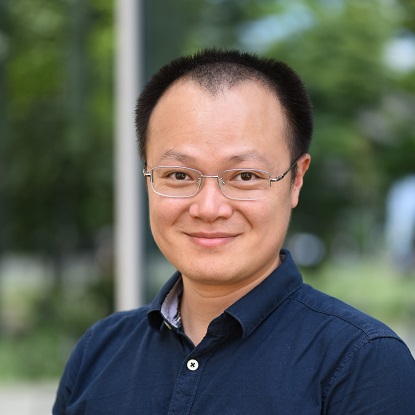
July 1, 2024
New group member: Zhichao Deng
Recently Zhichao Deng joined our group as a postdoctoral researcher. He will experimentally investigate light-induced flow patterns.
Welcome Zhichao!











